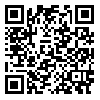Thu, Jan 8, 2026
[Archive]
Volume 9, Issue 1 (Feb 2024)
JNFS 2024, 9(1): 59-68 |
Back to browse issues page
Download citation:
BibTeX | RIS | EndNote | Medlars | ProCite | Reference Manager | RefWorks
Send citation to:



BibTeX | RIS | EndNote | Medlars | ProCite | Reference Manager | RefWorks
Send citation to:
Dehghani M, Omidvar N, Doustmohammadian A, Tork Z, Arvand A. Food and Nutrition Literacy through Formal Education in Iran: A Content Analysis of School Textbooks. JNFS 2024; 9 (1) :59-68
URL: http://jnfs.ssu.ac.ir/article-1-756-en.html
URL: http://jnfs.ssu.ac.ir/article-1-756-en.html
Food and Nutrition Literacy through Formal Education in Iran: A Content Analysis of School Textbooks
Department of Community Nutrition, Faculty of Nutrition and Food Technology; and National Nutrition and Food Technology Research Institute; Shahid Beheshti University of Medical Sciences, Tehran, Iran
Abstract: (1879 Views)
Formal education in any society should foster all aspects of students' growth. However, studying the curriculum of the country academic period indicates null food and nutrition. Nutrition, as an essential factor in the health of students, can play an effective role in their academic progress. This study aimed to analyze the content of school textbooks concerning food and nutrition literacy (FNLIT) concept and its components in Iran. Methods: This study is a content analysis of school textbooks during 2020-2021 academic year. All school textbooks published in 2020 for elementary (grades 1st to 6th), junior high school (grades 7th to 9th), as well as high schools (grades 10th to 12th) were included. Content analysis of the textbooks was conducted based on Krippendorf framework using FNLIT component checklist. The reliability assessment using Holsti method was 85.29% for elementary school textbooks and 84.78% for junior high school and high school textbooks. Results: The cognitive domain of FNLIT had the highest frequency (92%) within the text, images, and practice questions of the elementary school textbooks, followed by very few references regarding the skill domain (7%). The value-attitude domain was largely unnoticed (1%). In junior high school textbooks, the total number of FNLIT components was 439, of which the cognitive domain of 308 (70.16%) had the highest frequency, followed by the skill domain with 96 units (21.86%), while only 35 units were identified regarding the value-attitude domain (7.97%). In high school textbooks, 342 units of analysis were identified, 82.16% of which were related to cognition, 14.03% value-attitude domain, and only 3.80% were related to the skill domain. Conclusion: Meager attention is given to FNLIT and its components in school textbooks in Iran, especially concerning skill and value-attitude domains.
Type of article: orginal article |
Subject:
public specific
Received: 2022/10/27 | Published: 2024/02/21 | ePublished: 2024/02/21
Received: 2022/10/27 | Published: 2024/02/21 | ePublished: 2024/02/21
Send email to the article author
| Rights and permissions | |
 |
This work is licensed under a Creative Commons Attribution-NonCommercial 4.0 International License. |






